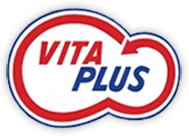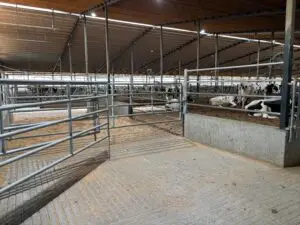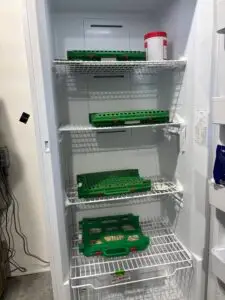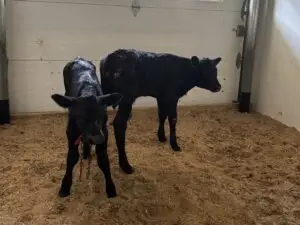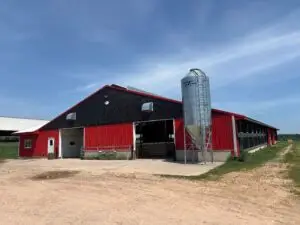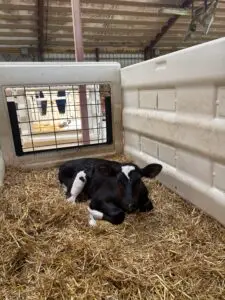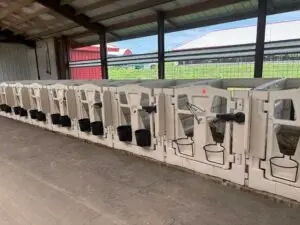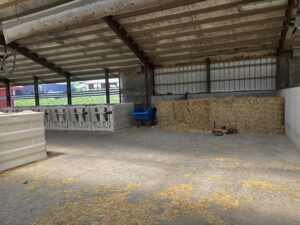
Virtual Farm Tour: Facilities and protocols to do the job well at Kohls Dairy Farm LLC

Weaned calves remain in their individual pens for about one week before moving into group pens of eight calves. They’ll stay in these pens for about one month before moving to a heifer barn. In these pens, they receive the same starter they were fed in the preweaned pens and they are introduced to dry hay.
The footprint of Kohls Dairy Farm LLC in Gillett, Wisconsin, has changed significantly in the last 12 years with the addition of a calf barn and a tunnel-ventilated cow barn. As herd manager Michelle (Kohls) Baranczyk explained, both construction projects prioritized an optimal environment for the animals and ease of use for managers and employees.
The calf barn
Baranczyk returned to her family farm in 2016 after she graduated from college, and is now growing her ownership in the dairy, which currently milks 425 Holsteins. Her father built the farm’s calf barn in 2013 while Baranczyk was in college.
“I remember when Dad said he was building a calf barn and, at that time, I didn’t know if I’d come back to the farm,” Baranczyk recalled, “so I didn’t have much of an opinion about it.”
Now as a herd manager, Baranczyk said she appreciates the facility for numerous reasons. The farm previously raised preweaned calves in hutches in various spots around the farm and dealt with all the common challenges of feeding and managing calves outdoors. In contrast, the calf barn offers a great environment for the calves and a comfortable and efficient place for people as they care for the youngest members of the herd.
The spacious barn offers plenty of room to operate equipment and store bedding and dry feed. Baranczyk said she much prefers the open-top pens versus the hutches because it’s easier to observe calves and administer vaccinations. Respiratory challenges are minimal thanks to the vaccination program and the barn’s combination of natural and mechanical ventilation. As a mom, Baranczyk said she is thankful her daughter can safely join her in the barn without fear of her getting too close to driveways and moving equipment.
Baranczyk, who feeds calves five times per week, said the barn’s milk room makes the process of mixing and feeding milk replacer efficient and easy for her and the two employees who feed calves. Baranczyk said they’ve fed Vita Plus Talon, a 25/25 milk replacer, twice a day for about eight years. Calves enter the barn at approximately 24 hours of age and drink 2 liters of milk replacer in bottles for the first few feedings. They are then pail-trained and introduced to an 18% starter and water. They receive 3 liters of milk replacer per feeding until they reach 10 days of age and are bumped up to 1 gallon per feeding at that point. Calves are weaned at approximately seven weeks of age, but Baranczyk said she determines when to wean a calf by its starter grain consumption and body condition, not by age. To wean, milk replacer is reduced to 2 liters per feeding for one week.
Newly weaned calves will remain in their individual pens for one to two weeks. Group pens at the back of the barn house groups of eight calves. The groups receive the same starter and are also introduced to dry hay. They remain in the barn for about a month before moving to a heifer barn.
Maternity care
Construction on the farm’s new tunnel-ventilated barn was completed in 2022. The facility includes dry cow pens and the maternity facilities. Close-up heifers and dry cows are placed on a bedded-pack and are moved into a side pen at calving.
Baranczyk said approximately 45% of the herd is bred to beef based on genomics. The rest of the herd is bred with sexed semen. Two rooms for newborn calves are located next to the maternity pens. One pen is dedicated to beef calves, which are picked up twice a week. The other pen is dedicated to dairy heifers. Baranczyk said she values the biosecurity of these rooms as heifer calves are never exposed to trucking traffic.
All colostrum feedings are administered in the newborn rooms. When the barn was constructed, Baranczyk decided to invest in a colostrum heat-treating system because “it’s extra reassurance that we’re making a good product for the newborn calves.”
Baranczyk said this has also simplified the colostrum-feeding process. Maternity employees simply warm the 1-gallon package of heat-treated colostrum and tube-feed it to the calf within 1 hour after birth.
“It’s so fast and easy, anyone can feed a calf,” Baranczyk said, “and calves have never been healthier.”
Colostrum with a Brix score of 22 and greater is designated for heifer calves while colostrum scoring above 18 is routed to the beef calves. When Baranczyk moved to the heat-treated colostrum system, she also added a second colostrum feeding. All calves receive 3 liters of colostrum scoring at least 18 at the second feeding, which occurs approximately 8 to 12 hours after the first feeding.
Managing for success
Baranczyk said providing a clean environment at birth and administering colostrum within an hour are two critical factors in raising healthy calves – through the preweaned period and beyond.
“I don’t want to have a sick calf because I can see the effects when she reaches the parlor and I don’t like thinking we could have done better,” Baranczyk explained.
A third critical factor is employee management, according to Baranczyk.
“Listen to employees’ concerns,” she advised. “Address them and don’t ignore them.”
If she can accommodate an employee request, she does. If not, she still discusses it with the team so they understand her reasoning.
Because Baranczyk works hands-on with the animals every day, she understands the value of simple protocols that are easy to follow and allow for efficient work. Employees appreciate that too. She said easy-to-follow protocols mean all chores are much more likely to get done correctly. Finally, match employee skills and interests to the right role.
Simply put, she said, “Get good employees that like calves and then treat them like you want to be treated.”
| Category: |
Starting Strong - Calf Care |
